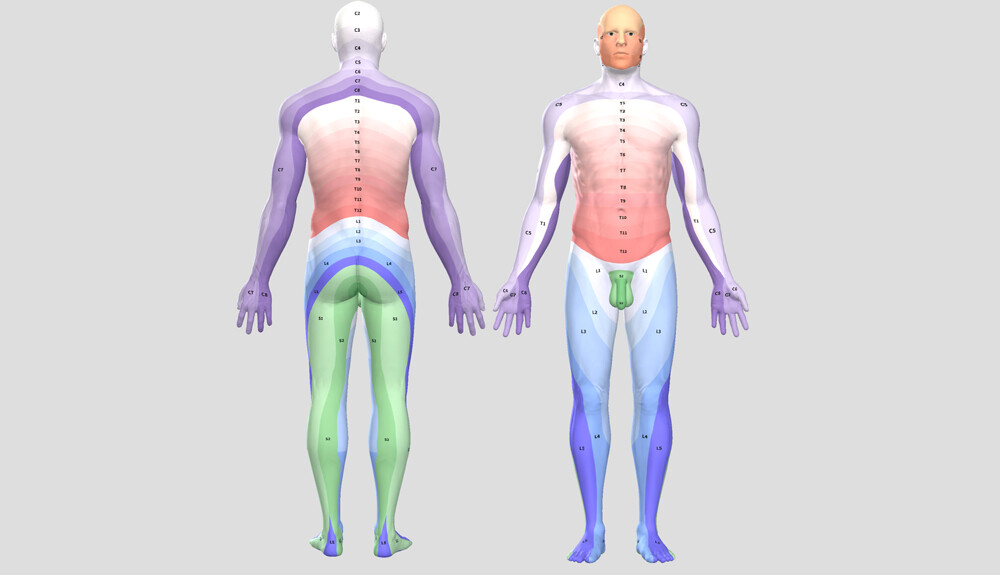The dermatome is a section of the body surface that is occupied by nerves entering and exiting a particular spinal vertebra. Based on your complaints, your doctor can identify which vertebrae are the cause of the problem.
For example, if you have pain in the back of your upper arm and in the back of your hand, index and middle finger areas, you may have a problem with an exiting/retracting nerve under the 7th (C7) vertebra in your neck. This is where to look for disc herniation, calcification, fracture, slippage, etc.
This is why, in the case of arm pain, you may have an x-ray of your neck instead of your hand.
If you are not familiar with dermatomes and how the spinal nerves “mesh” with your body in such a band, your pain may be deceiving you. One of the most common examples is sciatica. In which the pain is on the back of the buttocks or thighs. However, the treatment does not treat your thighs or buttocks, because this is where the pain “just protrudes”. The lumbar-thoracic junction is the “area of competence” of the S1 vertebra. Therefore, treatment of sciatica is directed at the lumbar spine.
Knowledge of the dermatomes is also important when using anaesthesia in the spine (epidural anaesthesia). The doctor uses the dermatome map to decide which nerve roots need to be blocked in order to achieve the anaesthetic effect in the surgical area.

